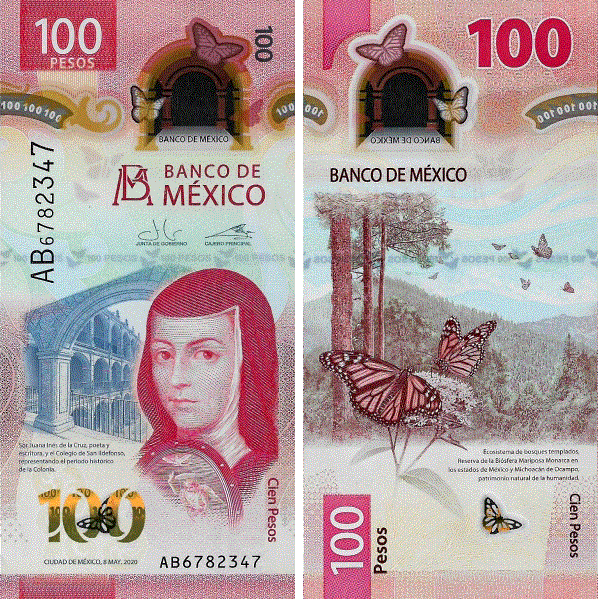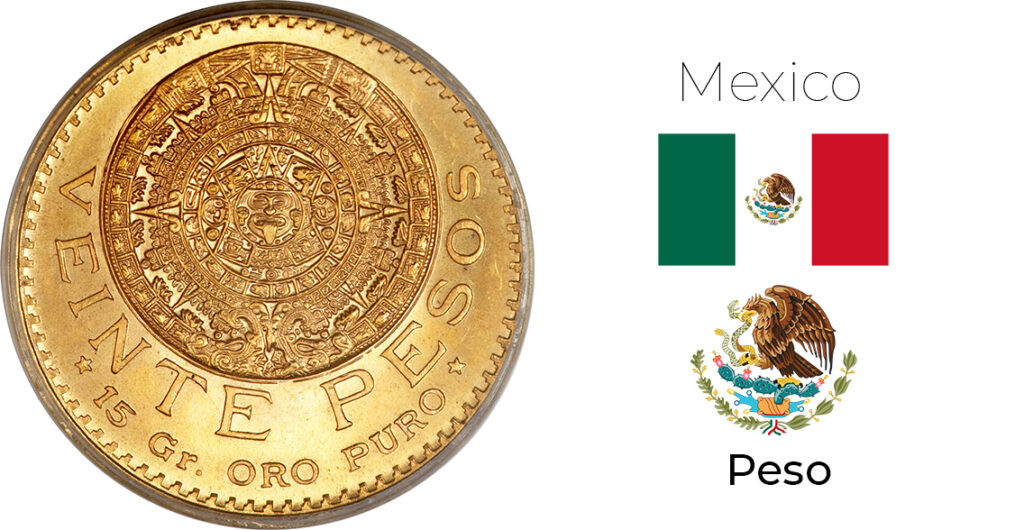
The visual journey of the Mexican Peso
Mexico has been a cradle of civilizations; not of the conventional types but civilizations that were unimaginably exotic, purely untouched and unbelievably different from the rest of the world. They had advanced knowledge of astrology and science, but still relied on pictorial representation – ingenious and bizarre – over any formal script. The better known amongst these lost civilizations, The Incas and the Aztecs have left us with any many unsolved puzzles. But their might prove to be of no match for the Spanish Armada that brutally murdered these native cultures. Mexico started its first war of independence under Miguel Hidalgo y Costilla in 1810 CE, a decade before Danish physicist Hans Christian Oersted established the relationship between Electricity and Magnetism. That’s is the reason why images of Hidalgo have dominated the Mexican Pesos since the very beginning. Mexico printed its first currency note in 1823 CE; thereafter local banks issued banknotes till 1920 CE. In the early 20th Century CE, some banknotes were even printed under “El Banco de Hidalgo.”
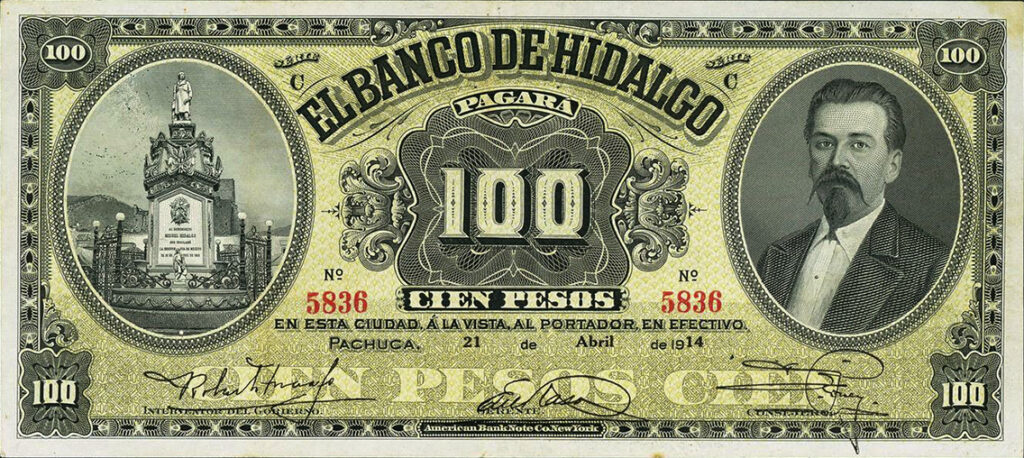
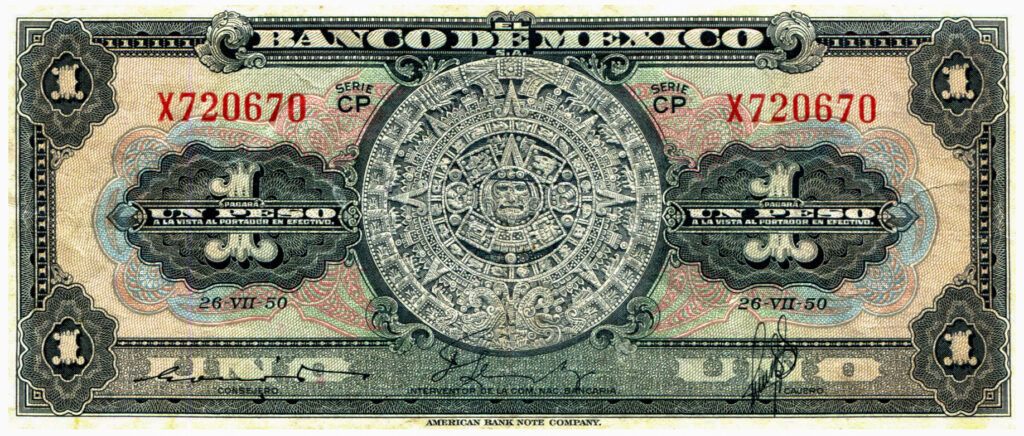
Between 1920-50 CE, Mexican banknotes were issued in a more formal manner by the Bank of Mexico (El Banco de Mexico) with printing outsourced to American Banknote Company. This US based company produced some of the most – aesthetically pleasing and neatly designed – Pesos. In all likelihood, these designs were developed by some unknown gifted Mexican graphic artists. Afterwards, Bank of Mexico started to print on its own, without impacting the quality of the currency notes in any way whatsoever. Since then Mexico has maintained the high-standards of design and printing. This can be discerned from a whole range of currency notes printed with recurring images of legendary personalities such as Miguel Hidalgo y Costilla, Juana Ines de la Cruz, Benito Juarez and motives derived from ancient civilizations (Inca Emperor Netzahualcoyotl, Aztek God Xochipili and others).
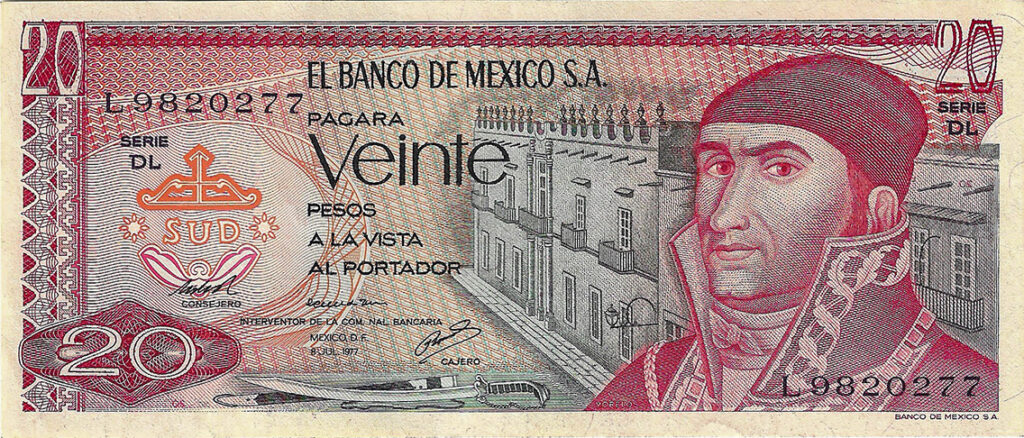
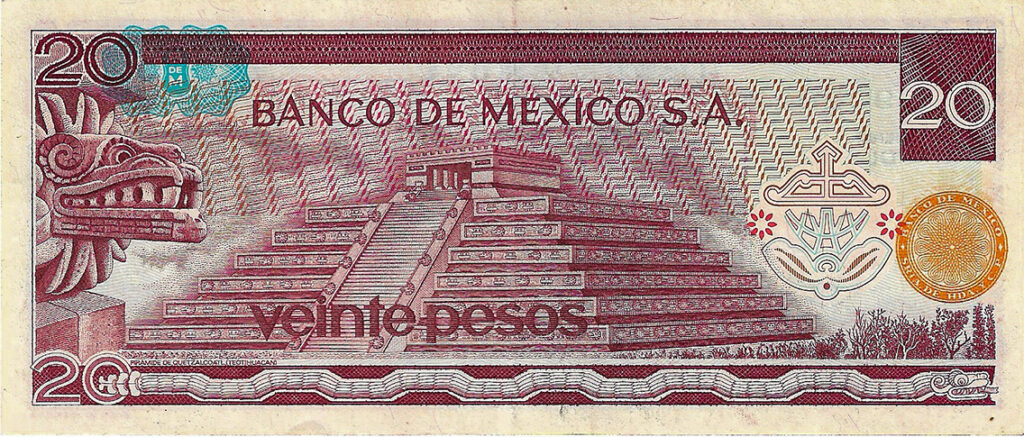
Main Features | The generic features on the observe include (i) Numerals for denominations in varying sizes at different locations (ii) Texts for Denomination in words, issuing authority (El Banco De Mexico S.A.), Serial Number, Place/ Date of Issue, and designation of three signatories and “pagará a la vista al portador” (Pay at sight to the bearer) (iii) Images – One Major and One minor in addition to numerous other symbols and patterns derived from Inca/ Aztec cultures. Elements mentioned at (i), (ii) and (iii) have been merged together with help of geometric and tessellating patterns. On the back, a slightly different arrangement has been adopted for Numerals, Texts and Images with the main exception being depiction of landscapes/ monuments/ places instead of personalities. A round stamp for “Banco de Mexico” is also (different for different issues). Whole assembly has been blended seamlessly with geometric and linear tessellating patterns.
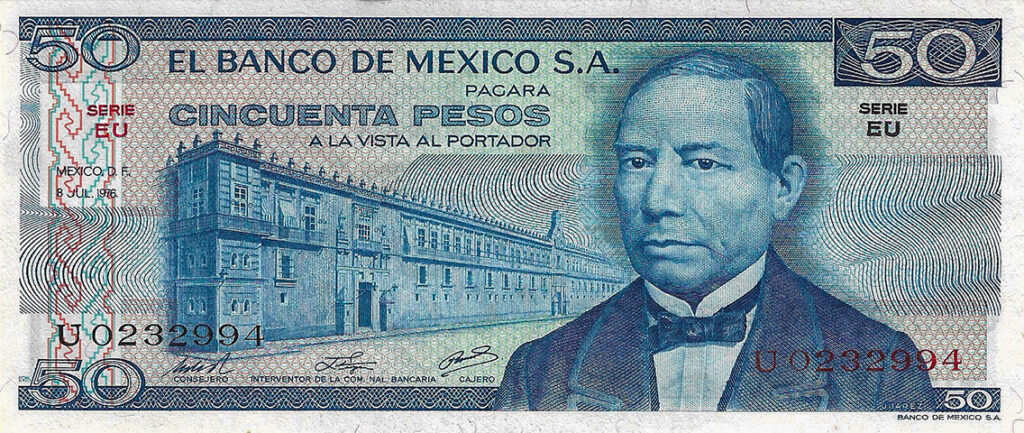
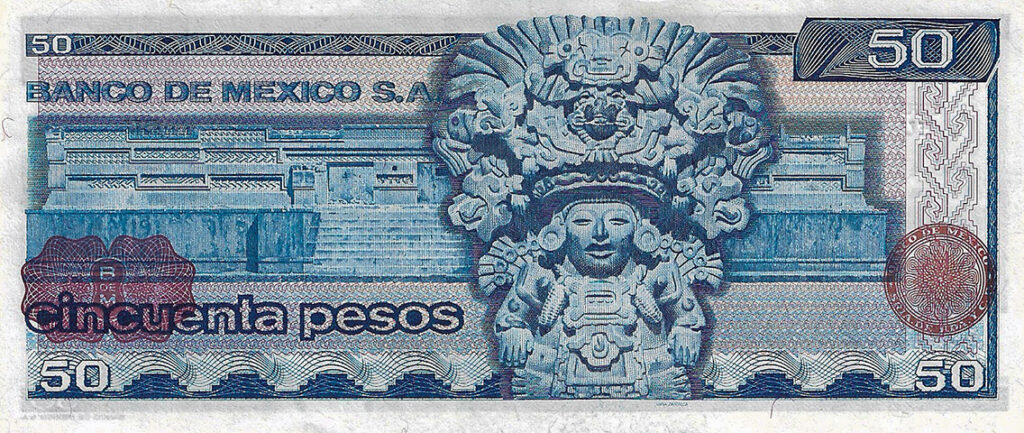
Mexico issued its first polymer currency note in 2002, however the zenith was reached in 2020 when Mexico’s 100 Peso Banknote became the first-ever Mexican banknote to win the prestigious IBNS Bank Note of Year Award. ISBN remarks, “The vertical format note is printed on polymer and features one of Mexico’s national heroines and poet/writer Sor Juana Inés de la Cruz. The reverse “piece de resistance” image features a temperate forest ecosystem which is known worldwide as the Monarch Butterfly Biosphere Reserve. The design continues to highlight Mexican cultural and historic characteristics with new graphic motifs. Produced by the Banco de Mexico’s new printing complex located in Jalisco, which began operation just before the coronavirus pandemic, the banknote has significantly improved security features which coordinate the transition to a polymer substrate.”
